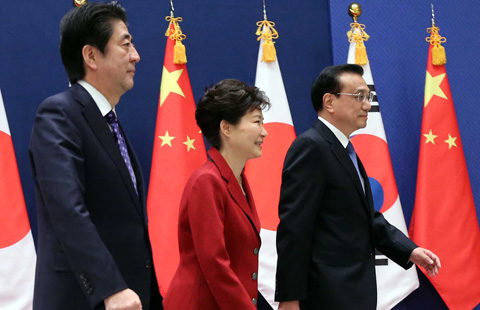
The 5th Plenum and the proposals for the new Five-Year Plan (2016-20) stated that "development is still the number one priority" and called for maintaining "medium rapid" growth. Since it is officially estimated that doubling the 2010 GDP by 2020 requires a 6.5 percent annual average growth in the next five years, it is likely that the new FYP will set a target around 6.5 percent.
To help achieve such an ambitious growth target against a challenging global and domestic environment, the government plans to promote innovation, upgrade manufacturing sector, increase R&D spending, rely more on Internet, modernize agriculture and integrate regional development. We expect the share of R&D spending in GDP to continue rising in the coming years, and business registration, a reflection of mass entrepreneurship, to increase as well.
The proposal recognized the importance to deepen economic reforms including in SOE, fiscal and financial areas. It also called for intensified "targeted" macro policy management while also announced full liberalization of goods and services prices in competitive sectors.
Consistent with the ongoing theme, the new FYP will target an increase in the consumption share of GDP, supported by policies to promote employment and wage growth, expand social welfare, and further develop the services sector. On the latter, lowering entry barriers and liberalizing services prices can help attract more private sector investment in related sectors. We expect the share of services in GDP to continue to rise beyond 50 percent in the next few years.
Go "green"
Green development is listed as a key development objective in the 13th Five-Year Plan for the first time. Along this line, the government had earlier already committed to cut 2020 CO2 emission intensity by 40-45 percent from the level in 2005, and the share of non-fossil energy in primary energy consumption is set to increase from 11.4 percent in 2015 to 15 percent in 2020.
The proposal called for the establishment of distribution systems of the rights to use energy and resources, and for pollution and CO2 emission. It also plans to implement prevention and clean up programs for air, water and soil pollutions.
The new plan will likely finalize environmental tax legislation, expand resource tax reform, support for various "Green finance" channels, and provide incentives for environmental-friendly technologies and products.
Industries that are set to receive continued policy support from the 13th FYP include new energy technology and application, new energy car, third-party environment protection services, new construction materials, and trading market of pollution rights & quotas.








